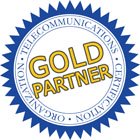Introduction to Broadband Converged IP Telecom is a high-level wide-ranging introduction to the world of modern IP telecommunications.
This course is based on the first chapter of Teracom's famous instructor-led BOOT CAMP, getting a full week of training started with an introduction to all of the different aspects of the modern converged IP telecom network.
Designed specifically for non-engineers, It's a first pass through the topics, starting at the beginning, explaining the fundamental ideas, jargon, equipment and technologies, the services that are sold, the players, where the money is, and how it all fits together.
In subsequent courses, we'll take another pass and drill deeper into key areas like Wireless, VoIP, PSTN, Ethernet, IP and MPLS.
On completion of this telecommunications course online, you will be able to:
- Define convergence, and two ways that it might be achieved
- Define bandwidth, explain what broadband means and how much "broad" might be
- Identify all of the main aspects of the modern broadband converged IP network, including the parts of the physical network, the three types of services, the equipment and players
- Describe the network core, its purpose, performance requirements and how they are implemented
- Identify the three primary network protocols: Ethernet, IP and MPLS, and what each does
- Explain how MAC Frames and IP Packets go together
- Identify the essential purpose of an IP address
- Explain the essential advantage of MPLS over IP for routing
- Define the three main technology areas for network access
- List the most popular technologies in each
- Describe the three components of a network service
- Define the three main groupings of telecom services based on customer type
- Describe at least four different meanings of the term VPN
- Differentiate between streaming video vs. video from your ISP, and the essential difference between them
- Explain in general what an MPLS VPN is and who uses it
- Identify the key difference between MPLS VPN services and SD-WAN services
- Explain what SIP trunking is and what legacy service it replaces
- List at least four types of wholesale telecommunications services
- Explain what a Data Center is
- Explain the essential function of a router
- Describe what a Layer 2 switch is used for, and how Layer 2 switches relate to routers
- Define multiplexing
- Identify three technologies that use Frequency-Division Multiplexing
- Identify the name for FDM in the fiber optic world
- Differentiate between FDM and Time-Division Multiplexing
- Describe what a gateway is and the two functions it performs
This is quite a range of knowledge, and can appear daunting, especially if you are new to telecom. Keep in mind that this course is the introduction, the first pass through all of these topics.
No-one is expecting anyone to be an instant expert!
In subsequent courses, we take a second and sometimes third pass through the topics and drill deeper to more fully understand the concepts and technologies.
With this course, we're getting started identifying and understanding all of the aspects of modern broadband converged IP telecommunications.
Based on Teracom's famous Course 101, tuned and refined over the course of more than 20 years of instructor-led training, we'll cut through the jargon to demystify modern IP telecommunications, explaining the jargon and buzzwords, the underlying ideas, and how it all works together… in plain English.















 Cable Vault in the Basement of a Central Office
Cable Vault in the Basement of a Central Office
